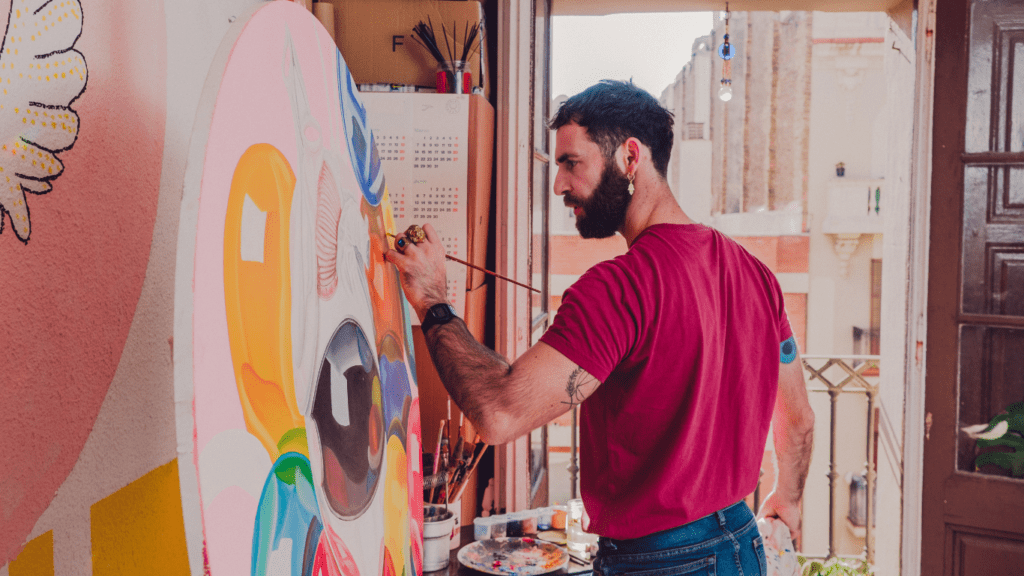Understanding Art Award Competitions
Art award competitions offer artists opportunities to showcase their work, gain recognition, and further their careers. Understanding their structure and significance helps artists navigate them effectively.
What Are Art Awards?
Art awards celebrate outstanding achievements in various artistic disciplines. These awards often come from prestigious institutions, industry organizations, and art societies.
The awards might include categories like:
- painting
- sculpture
- photography
- digital art
Each competition has specific criteria and submission guidelines, which entrants must follow. Winning or being a finalist in a well-known art award can significantly boost an artist’s profile.
Why Recognition Matters
Recognition from art award competitions validates an artist’s talent and hard work. It’s not just about the prize; it’s about the visibility and opportunities that come with it.
When artists receive accolades, galleries, collectors, and critics start noticing their work, which can lead to exhibitions, sales, and commissions. Moreover, recognition establishes credibility and can open doors to further professional growth and collaborations.
Preparing Your Artwork for Submission
Artists often struggle with selecting and presenting their pieces for art awards. Meticulous preparation increases the chances of catching the judges’ attention.
Choosing the Right Pieces
Consider thematic consistency and technical mastery when selecting artwork. Evaluate previous winners, focusing on common traits they exhibit like originality and emotional impact.
Prioritize works that resonate with the award’s specific theme. For example, if the award focuses on contemporary art, abstract pieces with innovative techniques might stand out. Ask trusted peers for their input, as they can provide fresh perspectives on your choices.
Presentation Tips
Ensure each piece is presented professionally. Use high-quality images with proper lighting to capture the artwork’s details. Clean borders, matte prints, or carefully crafted frames enhance visual appeal. Write concise, informative descriptions highlighting the artwork’s inspiration and technique.
Tailor presentations to the award’s preferences; some might favor minimal text, while others appreciate in-depth analysis. In a crowded competition, meticulous presentation helps create a memorable impression.
Building a Compelling Artist Profile

Creating a compelling artist profile is essential for grabbing the judges’ attention. This involves crafting an engaging artist statement and ensuring the importance of a professional portfolio.
Crafting an Engaging Artist Statement
An engaging artist statement explains your work and intent clearly. Discuss your artistic journey, influences, and what motivates your creativity. For example, describe major milestones, such as important exhibits or collaborations. Address the themes and techniques you use, giving judges insight into your thought process. Use concise language and avoid jargon to maintain accessibility.
Importance of a Professional Portfolio
A professional portfolio showcases your best work in a cohesive format. Include high-quality images of your most impactful pieces with detailed descriptions. Highlight the consistency and range of your skills across different pieces.
Organize the portfolio neatly, starting with your strongest work. If possible, include links to any press or gallery features to add credibility. Ensure the digital format you choose is easy to navigate, which helps judges assess your talent efficiently.
Tips for Standing Out to Judges
Artists aiming to get noticed by art award judges need more than just talent; they need strategy. Here are focus areas to elevate your submission.
Originality and Creativity
Exhibiting originality and creativity captures judges’ immediate attention. Unique art pieces, those unlike anything else seen, resonate more. Employ innovative techniques, experiment with new mediums, or combine styles to present something authentically you. For example, blending traditional painting with digital enhancements introduces a fresh perspective that stands out.
Context and Storytelling
Providing context and storytelling imbues your art with deeper meaning. Judges appreciate when pieces communicate a narrative or provoke thought. Background information, contextual details, and personal anecdotes enrich viewer engagement.
For instance, a painting representing a cultural heritage moment has more impact when accompanied by an explanation of its significance.
Engaging originality, creativity, context, and storytelling strategically maximizes your chances of captivating judges.
Networking and Promotion
Networking and promotion play a crucial role in getting noticed by art award judges. Effective strategies in these areas can amplify an artist’s visibility and create valuable connections.
Leveraging Social Media
- Social media provides a powerful platform for artists seeking recognition.
- Sharing artwork regularly on platforms like Instagram, Facebook, and Twitter helps reach a broader audience.
- Use high-quality images with engaging captions to capture viewers’ attention.
- Providing context for your pieces adds depth and interest.
- Use relevant hashtags to increase visibility.
- Engaging with followers through comments and messages fosters a loyal community.
- Collaborating with other artists and influencers expands reach and introduces your work to new audiences.
Connecting With Industry Professionals
Building relationships with industry professionals enhances credibility and offers opportunities for advancement. Attending art exhibitions, workshops, and events is essential for meeting gallery owners, curators, and other artists.
Approach these interactions with a professional mindset and have an elevator pitch ready. Joining art organizations and participating in online forums extends your network. Seeking mentorship from established artists provides valuable insights and guidance. Showcase your professionalism and passion, making a positive, lasting impression.

 Anna Freehill, a key contributor to Avant Garde Artistry Hub, plays a vital role in shaping the platform’s vision. As an author and collaborator, she helps bridge the worlds of art and technology, offering insightful articles that guide artists through the rapidly evolving creative landscape. Anna’s dedication to highlighting art's therapeutic value has contributed to the platform’s focus on mental and emotional well-being through creative expression.
Her involvement in building Avant Garde Artistry Hub has been instrumental in providing valuable resources to artists seeking to enhance their careers. Whether through her writing on business strategies or her support in platform development, Anna is committed to fostering a space where artists can thrive and embrace the future of art.
Anna Freehill, a key contributor to Avant Garde Artistry Hub, plays a vital role in shaping the platform’s vision. As an author and collaborator, she helps bridge the worlds of art and technology, offering insightful articles that guide artists through the rapidly evolving creative landscape. Anna’s dedication to highlighting art's therapeutic value has contributed to the platform’s focus on mental and emotional well-being through creative expression.
Her involvement in building Avant Garde Artistry Hub has been instrumental in providing valuable resources to artists seeking to enhance their careers. Whether through her writing on business strategies or her support in platform development, Anna is committed to fostering a space where artists can thrive and embrace the future of art.